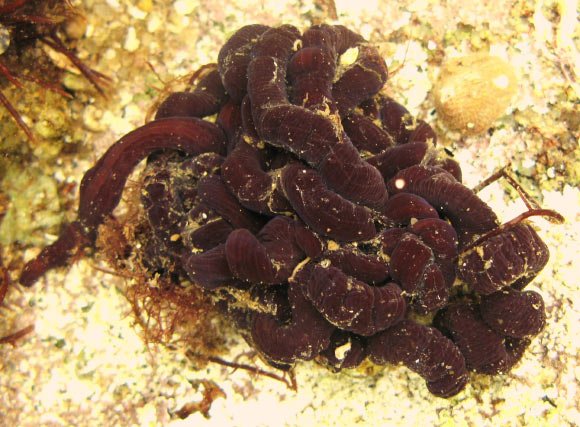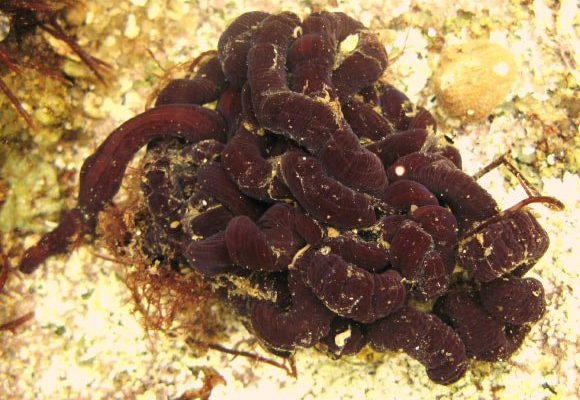
So, what’s the deal with bootlace worms and their predation habits? Let’s dive into this intriguing topic. By examining how they hunt, what they eat, and their effects on the environment, we can better appreciate the complex web of life beneath the waves. Grab a cup of coffee, and let’s explore the fascinating world of bootlace worms and their invertebrate prey!
Understanding Bootlace Worms
Bootlace worms belong to the family *Lineidae* and are part of a larger group known as polychaetes. These segmented worms are unique not just for their size but also for their striking appearance, which resembles a tangled piece of bootlace, hence the name. They thrive in various marine environments, often hiding among rocks and ocean floors, which makes them effective predators.
What sets bootlace worms apart is their feeding method. They are typically *active hunters*, using their muscular bodies to move swiftly through the water. These worms have specialized adaptations like jaws that can grasp and immobilize prey. Picture a snake striking its target; bootlace worms employ similar tactics. Their primary diet consists of smaller invertebrates, including crustaceans and other marine creatures.
Here’s the thing: understanding bootlace worms helps us appreciate their role in the broader ecosystem. They help control populations of various invertebrates, which in turn affects the balance of marine life.
How Bootlace Worms Hunt
So, how do bootlace worms actually find their food? They rely on a combination of sensory methods to detect their prey. They’re equipped with *chemoreceptors* that pick up on chemical signals in the water. This ability lets them track down crustaceans and other invertebrates hiding in nooks and crannies.
Once a bootlace worm locates its prey, it moves in quickly. They often ambush their targets, using their long, flexible bodies to strike with precision. When they get close enough, they’ll wrap around their prey and use their powerful jaws to clamp down. This hunting style not only shows their efficiency but also highlights the evolutionary adaptations that make bootlace worms such effective predators.
You might wonder about the impact this has on the populations of crustaceans and invertebrates. Bootlace worms can significantly influence the dynamics of marine ecosystems. By controlling these populations, they contribute to the overall health of their environment.
Diet of Bootlace Worms: What’s on the Menu?
Bootlace worms are not picky eaters, which is good news for them! Their diet mainly consists of various invertebrates, especially crustaceans like shrimp and crabs, but it doesn’t stop there. They also feast on other marine animals like mollusks and even smaller worms.
These worms have a knack for detecting which species are most abundant in their habitat. For example, if there’s an influx of shrimp in a particular area, you might find bootlace worms frequenting that spot. They adapt their hunting strategies based on prey availability, demonstrating a flexible approach to their diet.
This variety in diet is essential not just for bootlace worms but also for the marine ecosystem. By feeding on different species, they help maintain a balance within aquatic communities. Overpopulation of certain invertebrates can lead to competition for resources, and bootlace worms play a key role in preventing that.
Impact on Marine Ecosystems
The predation habits of bootlace worms have ripple effects throughout their ecosystems. By controlling invertebrate populations, these worms help maintain a natural balance. If bootlace worms were to decline or vanish from their environment, you could imagine potential overpopulation issues with certain crustaceans or mollusks. This imbalance could lead to significant changes in the ecosystem.
Moreover, bootlace worms serve as a food source for larger marine animals. Various fish and some other invertebrates dine on bootlace worms, making them an integral part of the food web. Removing bootlace worms from their habitat could impact not only their prey but also the predators that rely on them for nourishment.
It’s all interconnected—like a delicate dance. Each species, including the bootlace worm, plays its part in the larger performance of life underwater, showcasing the beauty of nature’s complexity.
Threats to Bootlace Worms
Like many marine species, bootlace worms face threats that can impact their populations. Pollution, habitat destruction, and climate change all pose risks to their survival. For instance, water pollution can lead to changes in the quality of the marine environment, affecting the availability of prey for bootlace worms.
Invasive species can also disrupt their ecosystems, leading to competition for resources. If non-native predators move into their habitat, bootlace worms might struggle to find food or compete effectively. Climate change can change water temperatures and salinity levels, further impacting their survival.
Protecting bootlace worms is vital for the health of marine ecosystems. Conservation efforts focused on maintaining water quality and habitat preservation can help ensure these fascinating creatures continue to thrive in our oceans.
In the grand scheme of the ocean, bootlace worms may seem like small players, but their role is significant. Through their unique hunting methods, diverse diet, and influence on marine ecosystems, they exemplify the delicate balance of nature. By understanding bootlace worm predation on crustaceans and other invertebrates, we begin to see the interconnectedness of life underwater.
Next time you think about the creatures lurking in the depths of the ocean, remember the bootlace worm and its intricate part in the web of life. These remarkable predators not only remind us of nature’s complexity but also highlight the importance of protecting our marine environments for generations to come.

